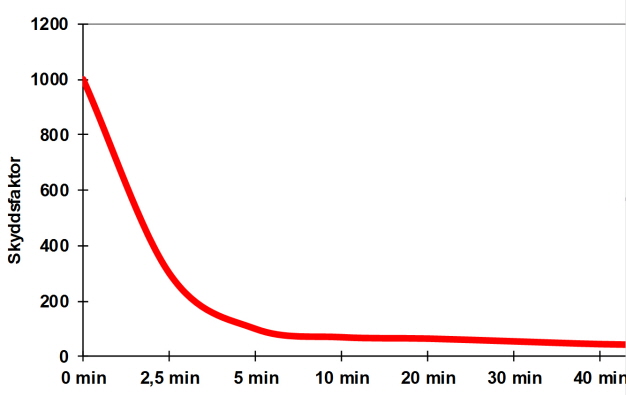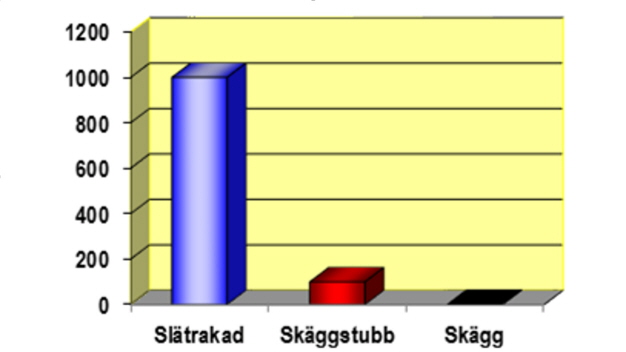Respirators
Respiratory protection is used when there are harmful pollutants in the air or there is a risk of oxygen starvation. The pollutants can be dust, smoke, aerosols, fibers, gas or steam.

There are two types of respirators: air-purifying devices and air-supplied devices. Air-purifying devices takes air from the environment and filters out harmful pollutants, while air-supplied devices are provided with a supply of clean air, such as compressed air. You should always use an air-supplied device when it is not clear what air pollutants are present in the surrounding air or when there is a risk of oxygen starvation.
Choose the right device
It is important to identify the different risks that exist and the tasks that will be performed to choose the right respiratory protection. Environmental factors, and whether there are specific provisions that must be complied with must also be considered. When choosing a respirator, it is useful to ask yourself these questions:
- Is there a risk of oxygen starvation?
- In what form does the hazardous substance exist?
- Is the work heavy?
- Is the work brief or longer lasting?
- Does the work take place in extreme temperatures or extreme humidity?
- What are the visibility requirements?
- How much freedom of movement will you need?
- Is it possible to communicate?
- What ergonomic aspects need to be taken into account, such as heat load?
- Can the respirator be combined with other personal protective equipment without impairing the protection?
It is important that the device is adjusted to the wearer, as it does not provide optimal protection if it leaks. Therefore, it must always be checked for leaks before use.
Ensure that everyone has been properly trained in the use of respirators
Before respirators are worn, adequate training must be provided. The training must include a theoretical part and practical testing. The user should be informed of:
- why the respiratory protection is needed and when to use it
- how to check the fit and that the device fits snugly
- the consequences of improper use
- limitations including time limits of the equipment
- how to adjust and put on the respirator
- how to check the respirator before each use
- how to change filters
- how to store and maintain the respirator.
Properly store and maintain the respirator
Store respirators in suitable containers or boxes when not in use, so they are protected against dirt, oil, the influence of chemicals and high humidity. Filters should be replaced in accordance with the manufacturer's instructions and must not be used after their expiry date.
Different types of respiratory protection
Most respirators consist of a facial part combined with a filter or device that can supply clean air. The facial part can be
- a half-mask – covers the user's nose, mouth and chin and is held in place with adjustable straps (seals against the user's face and comes in different sizes)
- a full-mask – covers the user's eyes, nose, mouth and chin and is held in place with adjustable straps (seals against the user's face)
- a visor – covers the face and part of the head (glasses can be used under the visor)
- a full hood – covers the entire head (glasses can be used under the hood).
Facial hair interferes with the seal of full and half masks, and for this reason it is advisable for users who have facial hair to use a visor or a hood.
Air-purifying devices
In air purifying devices, the inhaled air passes through a filter where it is purified. Different filters are used for different types of impurities. They have different letter and colour codes depending on the types of impurities they protect against, which should be indicated by the filter marking and the manufacturer's instructions accompanying the filter. The manufacturer's recommendations must always be observed when changing filters, and if particulate filters are used to protect against microorganisms and enzymes, it is advisable to discard the particulate filters after each use.
Filter masks are made entirely or partially with filter material. They provide protection only against particles and water aerosols. Filter half-masks should normally be discarded after each work shift unless they are marked "R". This means that they can be reused according to the manufacturer's instructions in the user manual.
Air-supplied devices
You should always use an air-supplied device when it is not clear what air pollutants are present in the surrounding air or when there is a risk of oxygen starvation. Air-supplied devices supply the wearer with uncontaminated air or oxygen. Air can be supplied through a hose connected to the air intake or compressed air or through portable compressed air bottles.
Protective ability of respirators
The protection factor is a measure of the extent to which the respiratory equipment reduces the concentration of pollutants. A respirator with a protection factor of 100 reduces the concentration of pollutants in the surrounding air 100 times, for example from 50 to 0.5 ppm.
Removing the respiratory protection during exposure drastically reduces the protection factor. The diagram below shows that if the respiratory equipment is removed for a total of five minutes during a period of eight hours, the protection factor is 10% of the protection factor for 100% use.
Image: the protective factor.

Source: Nordic Safety Association
The protection factor is also greatly reduced if users of full and half masks have stubble or a beard. The table below shows that only 10% of the protection remains if the user has stubble.

Source: Nordic Safety Association
Blue: smooth shaved
Red: stubble
Black: bearded
Last updated 2022-05-04
